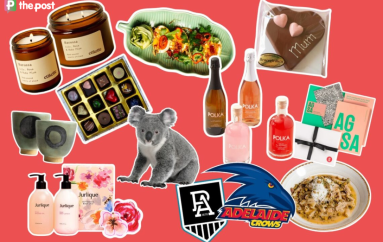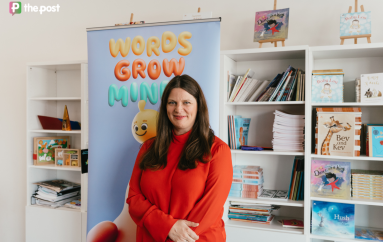Alan Bond: hero, entrepreneur, fraudster

Alan Bond with Prime Minister Bob Hawke at a reception to congratulate the crew of Australia II in Canberra, 1983.
When Alan Bond was a boy his father predicted one of two fates for his wayward offspring.
“Either he will end up in jail, or he’ll be the richest man in Australia,” Frank Bond said.
The father perhaps underestimated an over-achieving son who made wholehearted attempts to fulfil both paternal prophecies.
In a working life that began in a sign-writing business in 1959, Alan Bond rose to stunning prominence as a global entrepreneur and a symbol of Australian can-do enterprise.
He established a company that grew from nothing to one that brewed most of the beer in Australia, that owned nickel mines in Queensland, a national television network and the world’s most expensive painting, among many other things.
Bond also graduated from a spot of teenage burglary to become the greatest fraudster in Australian history and one of the country’s most celebrated corporate criminals.
Bond, who has died on Friday aged 77, also became the first non-American to win the once coveted America’s Cup sailing trophy, in 1983, an exercise that led to the birth of an icon that will well-and-truly outlast him – the boxing kangaroo.
As well as a suite of businesses at home, the Bond companies acquired extensive interests abroad including hotels, among them the plush St Moritz in New York, skyscrapers in Hong Kong, a company that conducted airship flights above London, the Chilean national telephone company and a floundering American brewery.
The Bond business conquests were regular and legendary. At his peak, bankers loved him, investors courted him and he was a national hero who could part the crowds Moses-like whenever he appeared on the streets of his hometown of Perth.
The staff at his corporate headquarters tended to see him differently.
Whenever the boss returned from a business trip a shudder would go through the executive team headed by the late Peter Beckwith as they were called on to patch up one crippled acquisition after another.
“It all made Alan seem as though he was invincible,” Beckwith once said.
“The bankers fell over each other to finance anything he wanted to do, everyone believed he was the greatest thing that had ever happened.”
He was far from it.
One of the worst of Bond’s acquisitions was the ailing American brewer G Heileman, for which he paid $1.26 billion in 1987, around three times what it was worth.
Heileman, Bond figured, would be the perfect vehicle to launch his local brewing assets – Swan, Castlemaine and Tooheys – in the US market.
It turned out to be merely another symptom of an incurable condition which caused Bond to do deals and then juggle his increasingly massive debt to pay for them.
In the same year he bought Heileman, Bond also made the most expensive art purchase the world had ever known.
But the $US54 million he paid for Vincent van Gogh’s Irises was typical of his unusual deals, its purchase having been financed to the tune of around $US27 million by the auctioneer Sotheby’s.
Bond never paid them back, and the painting never graced any of his homes.
His penchant for fooling around with fine art would later lead him to the low point of his life.
Bond meanwhile struck another deal during the same period that typified his doubtful business acumen and became part of Australian business folklore.
The purchase from Kerry Packer of the Nine Network for $1.05 billion, and its later sale back to Packer for $300 million was a dream transaction – but not for Bond.
It prompted the observation from Packer that it was a shame there could only be one Alan Bond in his lifetime.
By 1989, the man who had marched boldly into boardrooms around the world found himself firmly on the back foot with Bond Corporation’s debt at astonishing levels and his once compliant bankers clamouring for repayment.
More persistent than the bankers, however, was the English businessman Roland “Tiny” Rowland, in whose company Lonrho, Bond, using yet more borrowed money, had acquired a substantial holding.
Rowland pulled Bond’s business empire apart in a 93-page document he published showing it to be insolvent and trading illegally.
Rowland’s revelations made an already slippery slope ever more perilous.
The first part of his father’s forecast came to pass in 1991 when Bond faced trial for theft over a deal to rescue the failed Rothwells merchant bank.
It was a case that revealed much about how business was done Bond-style.
Bond allegedly talked a business colleague Brian Coppin into tipping a few million into a rescue of Rothwells while concealing that Bond Corp would receive a $16 million fee for organising the rescue.
Bond served six months, only to be acquitted at a re-trial.
That success proved fleeting as the world continued to crash down around the man who little more than a decade earlier had been named Australian of the Year.
In 1996 Bond was committed to stand trial for defrauding the shareholders of Bell Resources, a company he had acquired from the late Robert Holmes a’Court, of more than $1 billion.
He also stood trial and was jailed over a fraudulent art deal involving the Edouard Manet painting La Promenade which Bond’s public company, Bond Corp, sold to his private company Dallhold for $2.46 million.
Dallhold duly sold the painting a year later for $17 million.
It was during the La Promenade case that Bond suffered a celebrated, and suspiciously convenient, bout of amnesia.
He got four years for stealing the money from Bell resources and three for the art deal. Together the guilty verdicts made him the biggest fraudster in Australian history.
On his release from prison, rejuvenated and with memory restored, Bond got back to work, amassing another fortune through investments in diamond mines and oil companies in Africa.
Bond and his first wife Eileen, whom he married as a 17-year-old in 1955, divorced in 1992.
He married theatre producer Diana Bliss in 1995. She died in 2012.
– AAP




